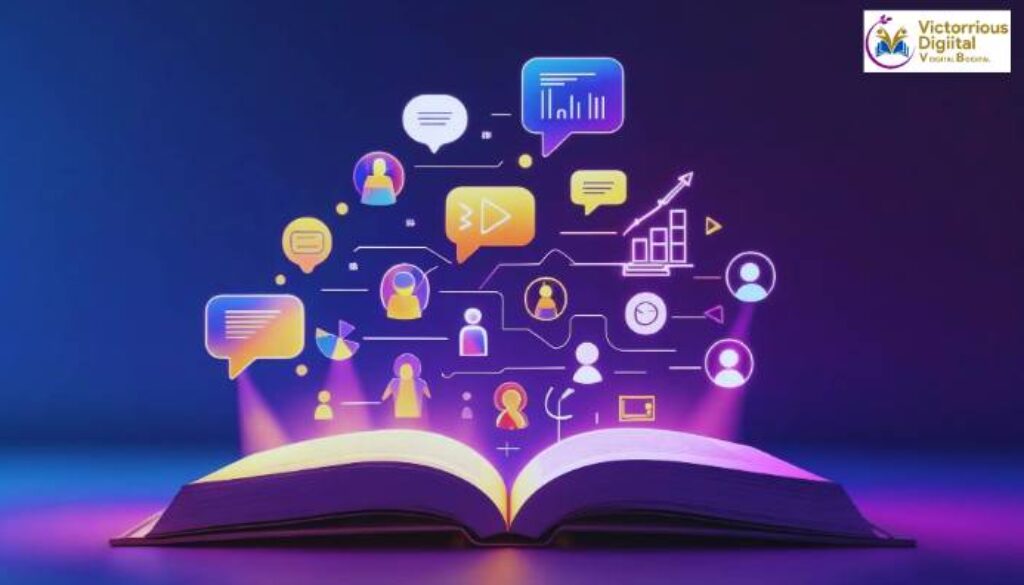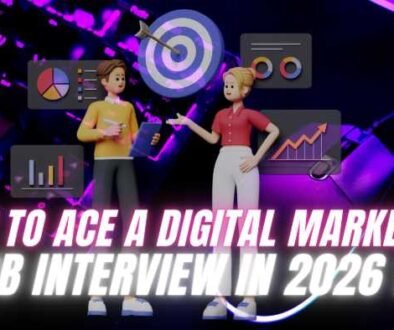The Power of Storytelling in Digital Marketing
In today’s fast-moving digital world, people are surrounded by marketing messages—emails, ads, social media posts, and more. But with so much content, how do you make your brand stand out? How do you truly connect with your audience?
The answer is storytelling.
Storytelling is one of the most powerful tools in digital marketing. Instead of just listing product features or offering discounts, storytelling allows you to make your audience feel something. When people feel emotionally connected, they’re more likely to trust your brand, remember your message, and take action.
In this blog, we’ll explain what storytelling means in digital marketing, why it works, and how you can use it step-by-step—even if you’re a beginner. If you want to explore this deeper, you can also join digital marketing courses in Pune or take online digital marketing classes with real-life practice.
Table of Contents
What is Storytelling in Digital Marketing?
Storytelling in digital marketing means using real, relatable, and emotional stories to connect with your audience. These stories can be about:
- Your brand or company
- Your customers
- Your product journey
- A problem and how you solved it
Rather than just saying, “We sell shoes,” a story might say,
“Meet Anjali. She walked 5 km every day in painful shoes… until she discovered our comfort line.”
This approach makes your message more human and helps the audience remember it.
Why Is Storytelling So Powerful?
Here are a few reasons why storytelling works so well in digital marketing:
- People Remember Stories, Not Stats: Facts are important, but they’re easy to forget. A good story, on the other hand, sticks in the mind.
- Stories Create Emotional Connections: People make buying decisions based on feelings. A story can make someone feel happy, inspired, understood, or even excited.
- Stories Build Trust: When you tell real stories—about your brand, your customers, or your mission—people begin to trust you more.
- Stories Stand Out: In a sea of ads and promotions, a heartfelt or funny story catches attention.
Where Can You Use Storytelling in Digital Marketing?
Storytelling can be used across many parts of your digital marketing strategy, such as:
- Website content – Tell the story of your brand or founders
- Email campaigns – Share customer success stories
- Social media – Use Instagram, YouTube, or LinkedIn to share behind-the-scenes stories
- Ads – Create short story-based video ads or image carousels
- Blogs – Share informative stories that also teach a lesson
- About Us page – Explain why your business was started and what you care about
Step-by-Step Guide to Using Storytelling in Digital Marketing
Let’s break down how to start using storytelling in your own campaigns—even if you’re a beginner.
Step 1: Understand Your Audience
Before you start telling stories, know who you are talking to. Ask yourself:
- What are their struggles?
- What are they looking for?
- What kind of stories would they relate to?
Example: If your audience is students looking for career growth, your story might focus on someone who took a digital marketing course and got a job.
When you know your audience well, you can create stories that truly connect.
Step 2: Pick the Right Type of Story
There are different kinds of stories you can tell in digital marketing. Here are a few:
- Brand Story: Tell the story of how your company started, the challenges you faced, and what your mission is today.
- Customer Story: Show how your product or service changed someone’s life. These are also called “success stories” or “case studies.”
- Problem-Solution Story: Start with a relatable problem, and explain how your product helped solve it.
- Behind-the-Scenes Story: Share how you work, who is in your team, or how your product is made.
- Value Story: Share what values your brand believes in—like honesty, sustainability, or helping others.
Pick the story type that matches your message and goal.
Step 3: Follow a Simple Story Structure
Every good story has three main parts:
- Beginning (The Setup): Introduce the person or situation. What is the problem or challenge?
- Middle (The Struggle): Talk about what happened next. What did the person try? What difficulties came up?
- End (The Solution): How was the problem solved? What result came from using your product or service?
Tip: Keep your story short and clear. You don’t need 1000 words to make it powerful. Even 3-4 lines can create an impact if done right.
Step 4: Add Emotions and Realness
People connect with feelings. Don’t be afraid to include emotions like frustration, excitement, fear, or hope in your story.
Also, keep it real. Don’t over-promise or create fake stories. Even small, true stories can be very powerful.
Example:
Instead of saying,
“Our course helped thousands of people,”
say,
“Ravi, a college student from Pune, was struggling to find a job. After joining our digital marketing course, he landed a role within 2 months.”
This kind of real story feels more honest and believable.
Step 5: Use Visuals to Support Your Story
Images and videos can make your story more engaging. You can use:
- Photos of the people in the story
- Short video clips
- Before-and-after images
- Graphs or stats (if relevant)
On social media, storytelling through short reels or carousel posts works very well.
Tip: Always keep the visuals natural and relatable. Don’t use overly polished or fake-looking stock images.
Step 6: End with a Message or Call-to-Action
Every story should lead somewhere. Once you’ve told the story, guide the audience on what to do next.
Examples:
- “Want to start your own journey like Ravi? Join our next digital marketing batch.”
- “Learn how we can help you grow your business. Contact us today.”
The ending should inspire, inform, or invite the audience to take the next step.
Tips for Great Storytelling in Digital Marketing
Here are some bonus tips to keep in mind as you begin using storytelling:
- Keep It Simple: Avoid complex language. Use short sentences and everyday words.
- Stay Honest: Use real stories when possible. If you need to create a fictional story, make sure it feels believable.
- Be Consistent: Tell stories regularly, not just once. Add stories into your monthly campaigns, emails, or blogs.
- Listen to Your Customers: Read their reviews, feedback, or social media posts. You’ll find great story ideas in real customer experiences.
- Practice: The more stories you write, the better you’ll get. Start with short ones, and grow from there.
Why You Should Learn Storytelling in Digital Marketing
In digital marketing, anyone can run ads or write content—but not everyone can connect emotionally with the audience.
Storytelling helps you:
- Build brand loyalty
- Improve engagement rates
- Increase conversions
- Stand out from competitors
It’s also a skill that can help you in many roles—from content creation and social media to branding and advertising.
If you want to learn how to master storytelling and apply it to real campaigns, consider joining a digital marketing course in Pune. You can also take online courses where you’ll learn storytelling, copywriting, content creation, and more—step by step.
Conclusion
Storytelling is one of the most powerful ways to connect with your audience in digital marketing. It’s not just about selling a product—it’s about creating a connection that lasts.
By using real, emotional, and meaningful stories, you can stand out in the digital world and build a brand people trust.
Whether you’re new to digital marketing or looking to improve your content strategy, learning how to tell good stories will take your marketing to the next level.
Want to become a confident storyteller in digital marketing? Join Digital Marketing Course in Pune and learn how to connect, engage, and convert through the power of storytelling.
Read Also: Using Distributed Marketing to Empower Local Teams




